How do you analyze coffee's chemical composition to predict flavor, aroma and quality?
Professional coffee knowledge exchange more coffee bean information please follow the coffee workshop (Wechat official account cafe_style)
There are many factors that affect the flavor of coffee: variety, baking degree, brewing formula, treatment, etc., but when you take a closer look, you will find that the flavor depends on only one thing: the composition of the compound.
The way coffee is roasted, the variety of coffee, and the altitude at which it is planted can all have an impact on compounds. But if we want to really understand the origin of delicious coffee, we need to understand the science behind it. You should know better if you can bake your own beans, because your job is to control a variety of chemical reactions by manipulating calories during baking. )
At the time of writing, the author is studying for a doctorate in food science, focusing on how to predict the flavor, aroma and quality of coffee by analyzing its chemical composition. In this article, let's take a look at the key points you should know.
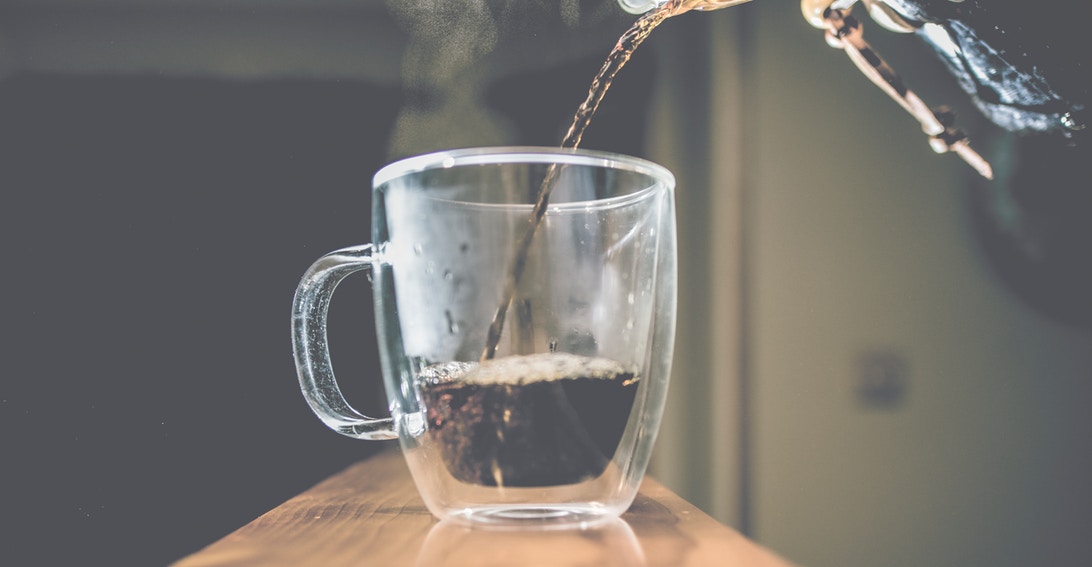
Freshly brewed coffee
Flavor is closely related to chemistry.
Aroma, flavor, aftertaste, acidity, alcohol thickness, these five coffee properties are the response to different compounds. On the cup table, we evaluate them with our senses, but the chemical reaction still works. We evaluate the dry aroma, then the aroma when we break the residue, and then the flavor. Different molecules can be felt at different stages.
As a Q grader, I like testing coffee very much. But as a scientist, I also study compounds directly and how they interact. There are many non-volatile compounds that affect carbohydrates and caffeine and affect the final flavor and quality. The content of these compounds will vary depending on the quality of raw coffee beans, but keep in mind that the chemical composition of raw beans is completely different from that of cooked beans.
This reminds me of volatile compounds: these compounds are mainly produced by chemical changes during baking. They have a profound impact on the quality of coffee.
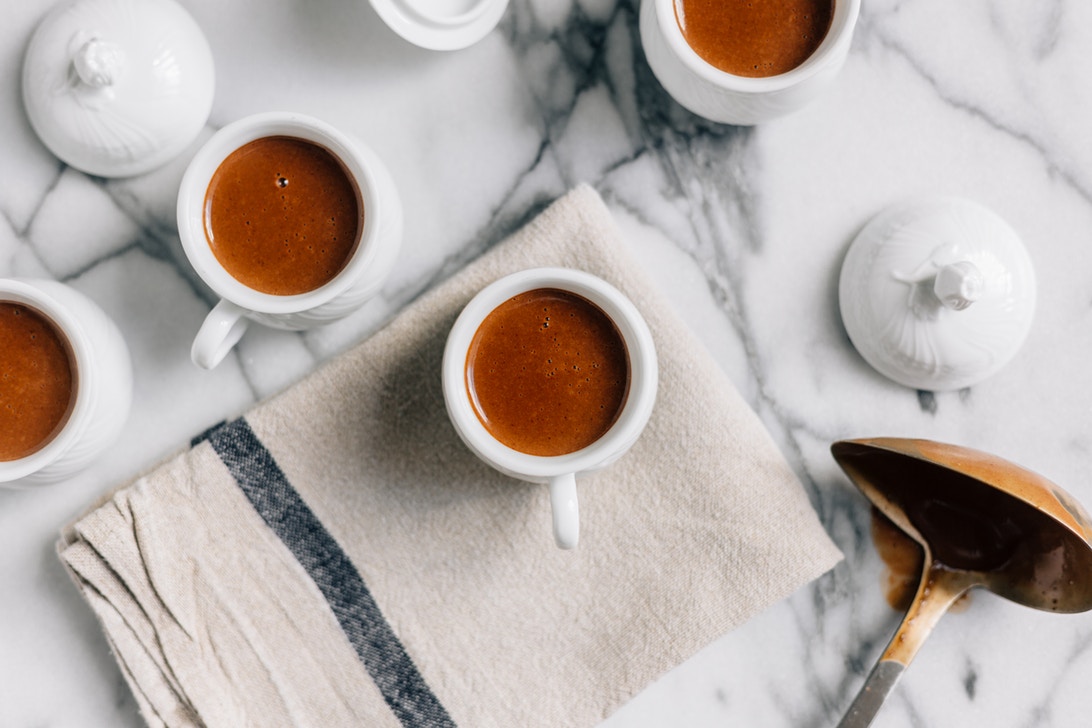
Some non-volatile substances that you should know.
When we talk about non-volatile substances, it is important to emphasize alkaloids (caffeine and trigonelline), chlorogenic acid, carboxylic acid, carbohydrates and polysaccharides, lipids, proteins, protein melanin and minerals.
Caffeine, for example, affects the perceptual intensity, bitterness and alcohol thickness of coffee. It is water soluble. Another non-volatile substance is trigonelline, which contributes to the aroma of roasted and brewed coffee.
Chlorogenic acid:
I like it very much, not because it is delicious, in fact, it is just the opposite, but the author has spent a long time studying this substance.
One important thing about chlorogenic acids is that they are formed from trans-cinnamic acids (caffeic acid, ferulic acid and p-coumaric acid) and quinic acid. Let me explain: quinic acid is the cause of the bitter and astringent taste of coffee. During the baking process, chlorogenic acid will degrade, which means we will feel the increase of quinic acid. This is one of the reasons why very deep-roasted coffee beans taste so bitter.
Organic acids:
Now we're talking about good acidity. This is a key attribute of the good quality of coffee and is usually related to sweetness. Here are some things you need to know:
Arabica has more acid than Robusta.
The baking process reduces the acid content (about 11% for raw beans and 6% for cooked beans).
Deep-roasted coffee reduces acid content and acidity
Now let's look at the types of acids: some acids are more easily detected by the senses, such as citric acid, malic acid and chlorogenic acid, although some acids degrade during baking (such as chlorogenic acid). But other acids increase concentrations (such as formic acid, acetic acid, lactic acid, etc.)
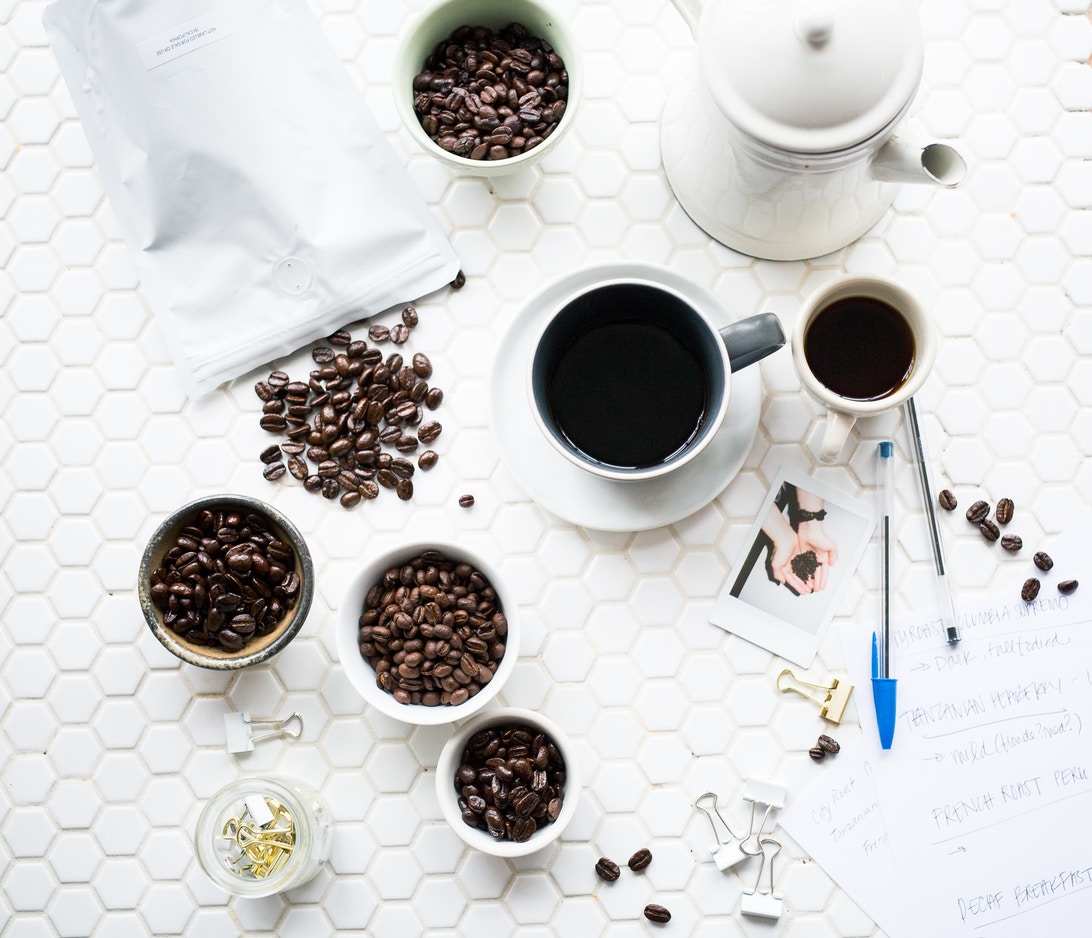
Carbohydrates and polysaccharides
What you should know are arabinogalactan, mannan and cellulose. These compounds play an important role in the retention of volatile compounds in coffee and contribute to the formation of aroma. And in terms of flavor, these molecules also affect the taste of coffee. More importantly, smaller glucose and fructose contribute to the sweetness of coffee.
Lipids:
They help brew the mellow taste of coffee, which is extracted from beans, and in espresso, they are one of the reasons for creating crema. The baking process does not really affect the content of lipids, but in the bean baking machine, the oil does move to the surface of the beans (to keep volatile compounds in the beans).
Melanoid:
These are the products of Maynard's reaction: the reaction between amino acids and carboxyl groups of reducing sugars. They are macromolecules that produce brown in our beans and increase the texture of the coffee. This means that the amino acid content of coffee is closely related to its quality. The more amino acids, the more reactions, the more melanoid.
However, it is important to remember that the change in the color of coffee is not only due to melanin, but also the result of caramelization.
After looking at the non-volatile substances, let's move on to the volatile substances.
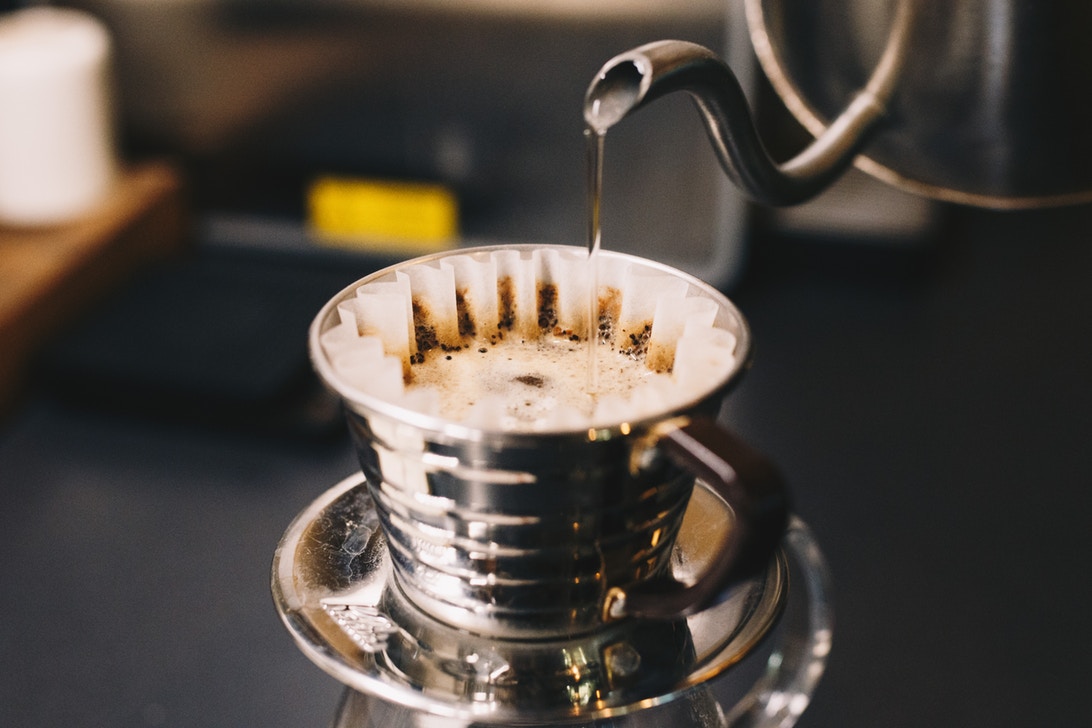
Use Kalita Wave to brew
What are volatile substances?
Next we come to the highlight of coffee: volatile substances. There are a lot of volatile substances in coffee, as mentioned earlier, they are necessary conditions for the quality of coffee.
Volatile compounds are mainly produced through chemical changes during baking, but it does not mean that raw beans have no contribution to this part. Volatile substances will be affected according to the variety of coffee, the technology of farmers' treatment, the geographical environment of coffee cultivation and other factors.
Roasted coffee contains more than a thousand volatile compounds, but only a few produce the aroma we feel, and many researchers point out that only about 20-30 compounds can be found in drinks. When we analyze the aroma, it may be a single compound, and this compound may combine with other compounds to produce a comprehensive effect, and the threshold of the human nose will not be felt by all 1000 compounds. The critical value refers to the minimum amount of chemicals sensed by the human nose.
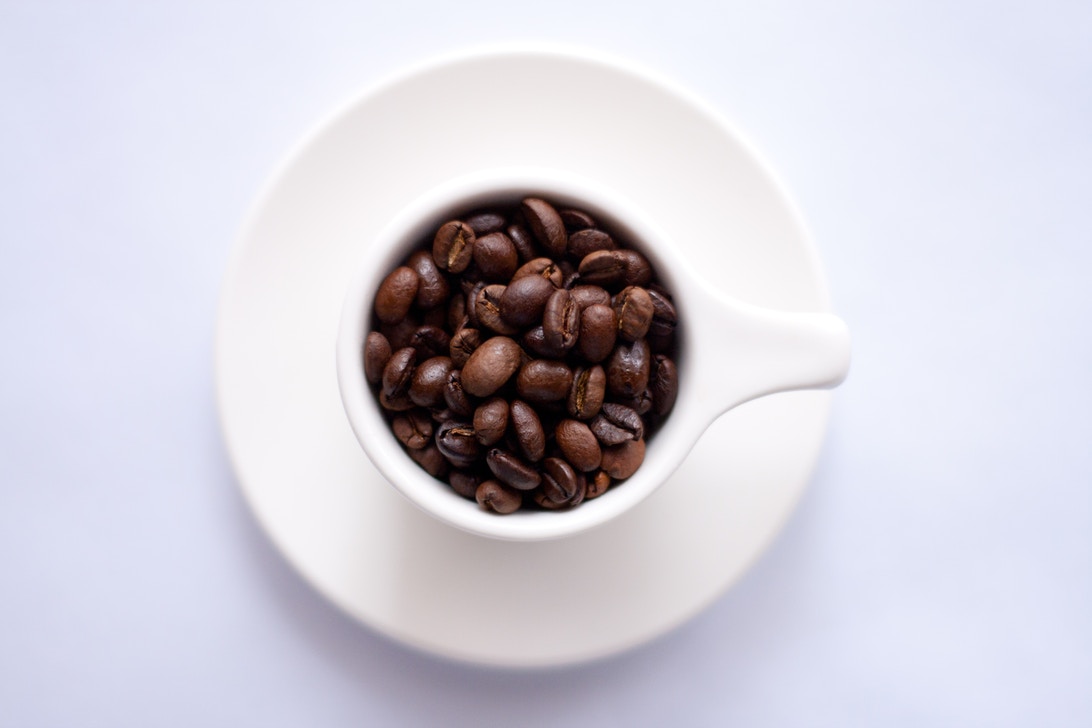
A reaction that produces volatile compounds.
Let's take a look at the chemical reactions that cause these volatile compounds. The main chemical reaction is Maynard reaction (non-enzymatic browning reaction). Although we have seen it in the melanoid blocks above, they also produce heterocyclic compounds containing nitrogen and sulfur.
Another important reaction to pay attention to is the degradation of phenolic acids. This is the degradation of chlorogenic acid (remember those parts from non-volatile compounds? To form caffeic acid (or another trans cinnamic acid), lactone and quinic acid. These compounds will give the extracted coffee a bitter and astringent taste.
Pyrolysis: another key reaction, which occurs mainly at the developmental stage of coffee roasting and refers to the decomposition of amino acids in aldehydes and ketones, which contributes to the formation of aromas.
And, to be honest, there are at least seven reactions that can be discussed during baking, but this is the subject of another article. To me, the baking phase is like a big chemical party in beans, and there's a lot going on.

Coffee beans roasted and waiting to cool down
The special flavor brought by a particular compound.
These volatile compounds include hydrocarbons, alcohols, aldehydes, ketones, carboxylic acids, esters, pyrazine, pyrrole, pyridine, furan, furanone, phenol and so on.
Although it may be frightening to see a technical term for dizziness, these substances can be traced back to specific coffee properties.
Now there are 36 smell bottles on the market for training smell and taste (there are still 100 flavors now? ), which contains 36 aromas that can be used to train your sensory skills. My favorite is apricot: fresh fruit aroma. Usually, flower and fruit aromas are the result of the reaction of ketones with aldehydes. In the book of the fragrance bottle cover group, you will find that this aroma is related to benzaldehyde (an aldehyde).
Furan and furanone usually make us feel the taste of caramel and roasted coffee. Pyrazine can be associated with the taste of nuts and roasted coffee. Of course, the number and interaction of some other compounds may have a negative impact: guaiacol molecules (phenolic compounds) are the cause of drug flavor and baking taste.
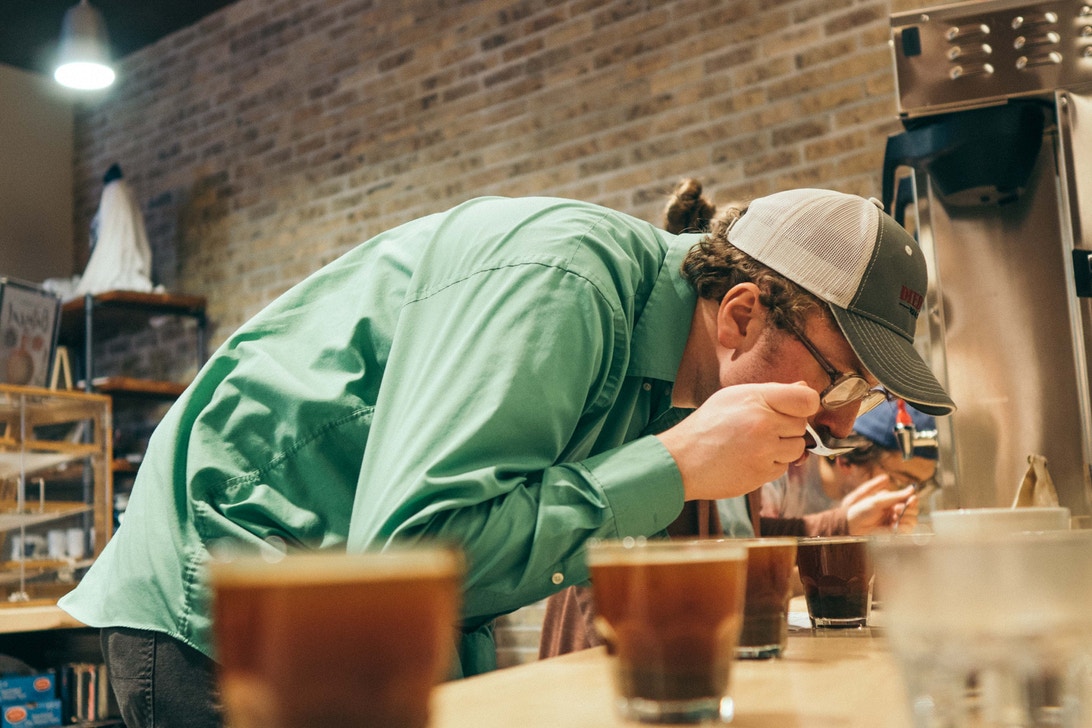
Coffee cup test
The author is sorry if it makes readers dizzy, but there seems to be no limit to what the world is trying to explore. This article is only an introduction to coffee chemistry, and there is still a lot to learn. So let's talk about it together, whether you're from a scientific point of view or from a coffee lover's point of view.
Although all this is attributed to the profound and complex field of science, it is these compounds that we taste in the cup every day.
Translated from Perfect Daily Grind.
Translated by Cheng Zhen Coffee
END
Important Notice :
前街咖啡 FrontStreet Coffee has moved to new addredd:
FrontStreet Coffee Address: 315,Donghua East Road,GuangZhou
Tel:020 38364473
- Prev

How much caffeine does a cup of coffee contain? Does decaf taste good?
How much caffeine does a cup of coffee contain? Does decaf coffee taste good? In addition to the variety of coffee beans, the amount of caffeine in a cup of coffee mainly depends on the baking time and extraction time of coffee beans. The way to coffee, in this, as long as you know how much caffeine is. Varieties of coffee beans: Arabica beans vs. Tanbusta bean
- Next
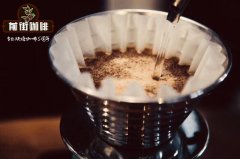
A cup of Turkish coffee with divination?
Turkish coffee, also known as Arabica coffee, is the ancestor of European coffee, which has a history of 700 to 800 years. It is said that in Turkey, it is extremely noble to make a cup of traditional Turkish coffee for guests, and some even bathe in advance.
Related
- Beginners will see the "Coffee pull flower" guide!
- What is the difference between ice blog purified milk and ordinary milk coffee?
- Why is the Philippines the largest producer of crops in Liberia?
- For coffee extraction, should the fine powder be retained?
- How does extracted espresso fill pressed powder? How much strength does it take to press the powder?
- How to make jasmine cold extract coffee? Is the jasmine + latte good?
- Will this little toy really make the coffee taste better? How does Lily Drip affect coffee extraction?
- Will the action of slapping the filter cup also affect coffee extraction?
- What's the difference between powder-to-water ratio and powder-to-liquid ratio?
- What is the Ethiopian local species? What does it have to do with Heirloom native species?

